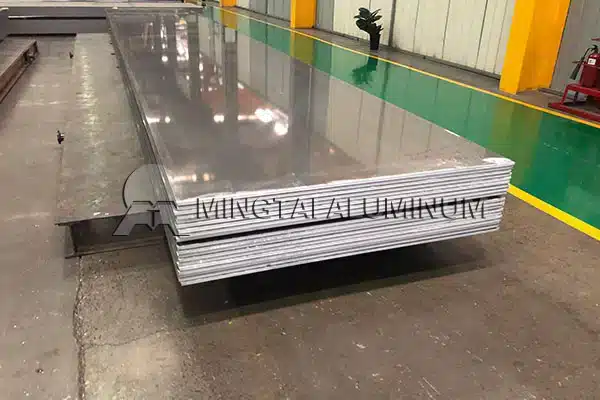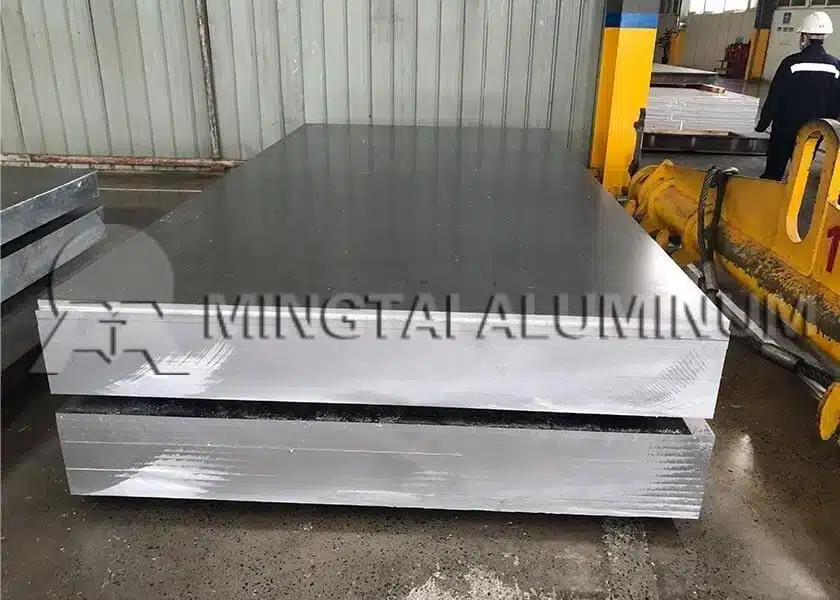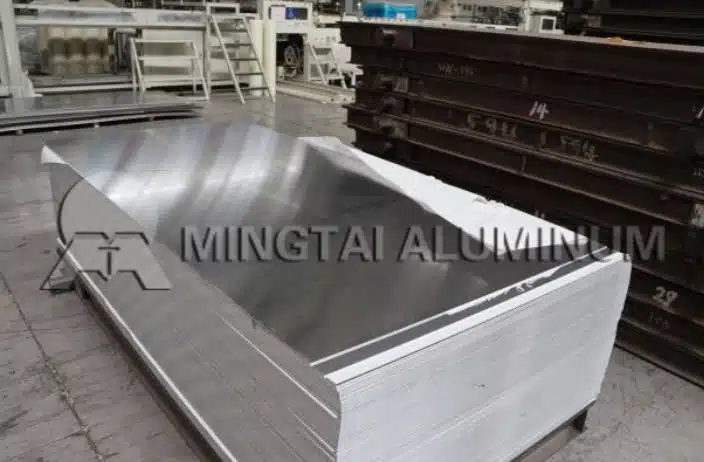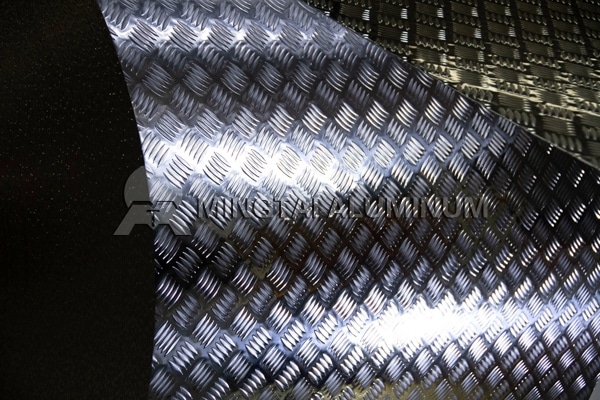
If you’ve ever worked with aluminum for tooling or fixtures, chances are you’ve heard of 6061 T651 aluminum plate. It’s that one alloy people keep going back to — strong, stable, easy to machine, and not overly expensive. For a lot of shops, it’s the “default” choice before anyone even opens a datasheet.
MINGTAI ALUMINUM, a long-time aluminum plate supplier, has seen this alloy used in everything from aircraft jigs to small machine bases. Let’s slow down a bit and see what makes it so popular — what’s inside it, how it’s treated, and where it really shines.
What Is 6061 T651 Aluminum Plate?
To put it simply, 6061 is a magnesium–silicon alloy. The “T651” means it has gone through heat treatment, stretching, and aging to make the metal stable. Think of it as the “relaxed” version of 6061-T6 — the stress is taken out, so when you mill it, it won’t twist or move much.
It’s a favorite for CNC machining because it holds size. You can take a big 40 mm plate, hog out half of it, and it’ll still stay flat enough to bolt straight onto your fixture bed.
Here’s how the common temper types compare:
| Temper | Process | Main Advantage |
| T4 | Heat-treated, naturally aged | Softer, easier to form |
| T6 | Heat-treated, artificially aged | High strength |
| T651 | T6 + stretched to remove stress | Better stability for machining |
Mechanical and Physical Properties
People like 6061 T651 because it strikes a nice balance — not as strong as 7075, but more forgiving. It’s light, takes a decent load, and won’t corrode easily if you leave it out on the shop floor for a few days.
| Property | Typical Value |
| Density | 2.70 g/cm³ |
| Tensile Strength | 310 MPa |
| Yield Strength | 276 MPa |
| Elongation | 12 % |
| Hardness (Brinell) | ~95 HB |
In real life, that means a 10 kg plate can handle roughly 3 tons before it even starts to give. Not bad for something you can lift by hand.
Why Many Engineers Stick With 6061 T651
Every alloy has its quirks, but this one is easy to live with.
- It cuts nicely — no gummy chips like 5052.
- It stays flat even after aggressive pocketing.
- It anodizes evenly without blotches.
- It doesn’t cost a fortune.
For a lot of MINGTAI ALUMINUM’s regular buyers, it’s the “good enough for anything” aluminum. They’ll use it for tooling plates one day and robot arms the next. You can call it the Swiss Army knife of alloys.
Where It’s Commonly Used
You’ll find 6061 T651 aluminum plate used in everywhere machinery is built:
| Industry | Typical Use | Why It Works |
| Aerospace | Ribs, brackets, panels | Light, strong, stable |
| Automotive | Frames, molds | Easy to weld and finish |
| Marine | Boat decks, fittings | Handles saltwater well |
| Industrial | Jigs, fixtures | Flatness under heavy cuts |
| Automation | Machine frames | Light but rigid |
A customer once told MINGTAI ALUMINUM their 6061 T651 plate lasted six years on a hydraulic fixture before they even needed to re-surface it. That’s the kind of reliability you don’t notice until you don’t have it.
How It Stacks Up Against Other Alloys
Here’s a quick look at how it compares to a few other common plates:
| Alloy | Strength | Machinability | Corrosion Resistance | Typical Use |
| 6061 T651 | High | Excellent | Excellent | All-purpose machining |
| 6082 | Medium | Good | Excellent | Transport & beams |
| 7075 T651 | Very High | Moderate | Fair | Aerospace parts |
| 2024 T351 | High | Average | Poor | Aircraft skin |
| Cast Tooling Plate | Low | Great | Fair | Molds, fixtures |
If you just need a tough, clean-cutting plate that won’t move under stress — 6061 T651 hits the sweet spot.
MINGTAI ALUMINUM usually suggests it unless the job calls for extreme tensile strength (then you jump to 7075)
Machining, Welding & Surface Finishing
Machining 6061 T651 is pretty forgiving.
- Use sharp carbide cutters and a steady coolant stream.
- For thick parts, do a rough pass, let it “relax” overnight, then finish the next day — a trick many toolmakers still swear by.
For welding, TIG or MIG works fine. Filler wires like ER4043 or ER5356 do the job. And if you want it to look nice? Anodize it. The finish comes out clean and satin-smooth, especially on MINGTAI ALUMINUM’s rolled plates.
Some machinists even polish it up and leave it raw — it’s got that silvery, almost “engine-room” look that hides fingerprints well.
Buying and Sourcing Tips
Before you order 6061 T651 aluminum plate, it’s worth checking a few basics:
- Ask for a mill test certificate (MTC) — MINGTAI ALUMINUM provides one for every batch.
- Look at flatness tolerance, especially if you’re machining precision plates.
- Confirm grain direction if you need consistent stiffness in one axis.
- If you’re cutting large blanks, request saw-cut edges to save prep time.
MINGTAI ALUMINUM supplies aluminum plates from 6 mm up to 250 mm thick, with custom cutting service. They’ve got global shipping down to a system — many plates leave the warehouse within two days.

6061 T651 aluminum plate isn’t fancy, but it just works. It’s light, reliable, and easy to machine — everything you want when you need a part done right the first time.
Over the years, MINGTAI ALUMINUM has supplied this grade to hundreds of factories making things that move, fly, or spin. If you’re building tooling, a robot arm, or even a small press frame, chances are this alloy is already on your material list.
Want to check current stock or get a custom cut? Drop MINGTAI ALUMINUM a message — they’ll probably have it on the shelf.
FAQ
Q: What does “T651” really mean?
A: It means the plate’s been heat-treated, stretched to remove stress, then aged — basically tuned to stay flat.
Q: Is 6061 T651 aluminum plate easy to weld?
A: Yes. TIG or MIG with ER4043 or ER5356 filler works. Just clean the oxide first.
Q: Can 6061 T651 aluminum plate be anodized?
A: Sure. You’ll get a smooth, even surface, especially on rolled plate from MINGTAI ALUMINUM.
Q: What’s the difference between 6061 T6 and 6061 T651 aluminum plate?
A: T651 is T6 that’s been stress-relieved, so it warps less during machining.




